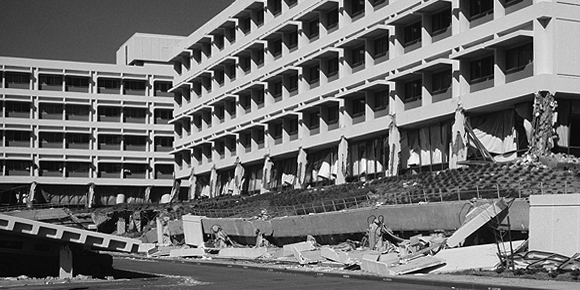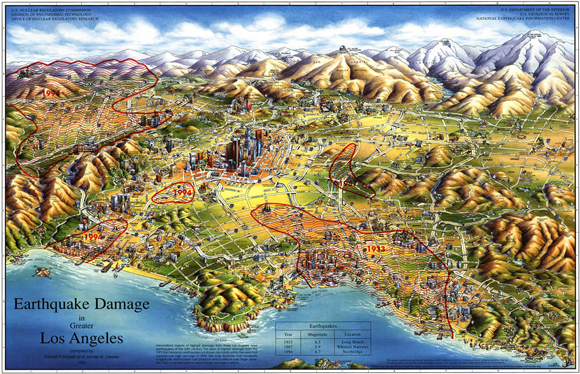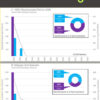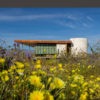
The American Institute of Architects, California Council, (AIACC) has long been a supporter of disaster assistance to California citizens, aiding disaster victims with recovery and rebuilding. In conjunction with assisting disaster survivors, the AIACC is involved in disaster preparedness, as well. The first AIACC Disaster Preparedness Handbook originated in 1984. It was updated in 2005, with the goal of including many of the agencies and organizations that typically respond to disaster survivors. Focus groups were held with many of the entities that regularly work with disaster victims, and representatives from the following organizations were involved in the creation of the Handbook:
U.S. Geological Survey
California State Architect
California State Building Standards Commission
Governor’s Office of Emergency Services
Earthquake Research Institute
Sandia Laboratories
Aediface Architecture
Degenkolb Engineers
Haviland Associates
Muller & Caulfield Architects
Perkins & Will
WWCOT
The purpose of collaborating was to join efforts, rather than work independently, and to work together when disaster strikes. The focus groups provided information that was formatted to cre ate a handbook for those interested in establishing a preparedness plan—AIACC members, its chapters, and the public at large.
The Disaster Preparedness Handbook presents in simple terms the best plan for each individual to be prepared for a disaster. The easy-to-follow system aids in alleviating some of the chaos and confusion that occur during a disaster.
“The first truth about disaster preparedness,” as the Handbook emphasizes, “is that nothing prevents a disaster.” In California, wildfires, floods, and earthquakes are natural hazards that can and do result in disaster. Unfortunately, the worldwide threat of terrorism must also now be added to the list. In the aftermath of disasters, safety evaluation, damage assessment, and recovery all depend on the unique skills and expertise of architects. As advocates for public safety, architects are involved in the local, state, and federal activities that affect the public’s health and safety through the built environment.
A disaster is unsettling and can be overwhelming. The AIACC Disaster Preparedness Handbook includes an updated list of emergency service contacts, providing victims with the information they need regarding whom to call for what, available at their fingertips. In addition, an emergency card is included to help guide disaster victims about what to do in the event of a particular disaster. A “Decision Checklist” provides individuals a sequence of steps to take when a disaster occurs and to check off as they are completed.
The AIACC is actively involved in assistance to those affected by disasters in California. It works with counties and other agencies to expedite the turn-around time for the issuing of building permits, in addition to working with representatives from most insurance companies, as well as local political figures, conducting workshops for disaster victims to help them through the recovery and rebuilding process. The AIACC has also developed comprehensive fire resources, providing guidance to fire victims in their rebuilding efforts.
At the time a disaster hits, the AIACC immediately launches into disaster assistance mode, quickly issuing press releases and public service announcements to educate and alert the public to possible fraudulent products or claims—in damage assessment, debris removal and demolition, the process of financing, and rebuilding. The AIACC and local California chapters advise victims on rebuilding options, what to look for in deciding what kinds of professionals they will need, and how best to select the professional who is right for them.
The AIACC provides a toll free phone number for victims to speak directly to an architect regarding the rebuilding process and works closely with the Office of Emergency Services to provide disaster certified architects to the regions affected by a disaster. Comprised of twenty-two chapters throughout California, the AIACC also works closely with each chapter affected to provide assistance to disaster victims in their respective areas.
John Grounds, AIACC 2009 president, states, “We have learned from past disasters that this is not the time to make hasty decisions. Residents should educate themselves about the rebuilding process and their options. It can take two to three months for disaster survivors to make informed decisions about the long-term impact of rebuilding their communities, and it is incumbent upon architects to help them make the best choice for themselves and the environment. The AIACC conducts workshops regarding the design, permitting, and construction process and how to work with city and county agencies to expedite permitting, allowing residents to get back into their homes as quickly as possible.”
With the input of architects, the state Office of Emergency Services, and the AIACC, protocols have been developed enabling certified AIACC volunteers to assist in the safety assessment and inspection of residential and commercial buildings.
Architects are concerned with the sustainability of all buildings and the use of materials to make rebuilt structures as environmentally responsible and energy efficient as possible. But sustainable design also means that homes be rebuilt to enhance their capacity for survivability in future disasters. Architects’ expertise is key in defining what the best rebuilding approach is for each area in California.
Disaster preparedness and assistance are among the many effective and impactful programs the AIACC offers its members and California citizens. For more information on these and other programs, please visit AIACC.org, where all disaster preparedness resources are available free of charge.
Author Lori Reed is Director of Marketing and Communications at the AIA California Council.
Originally published 4th quarter 2009 in arcCA 09.4, “Infrastructure.”






